F1 flags explained: What does each flag mean in Formula 1?
The flags waved in Formula 1 are very significant. It is a way to communicate with the drivers while they racing.
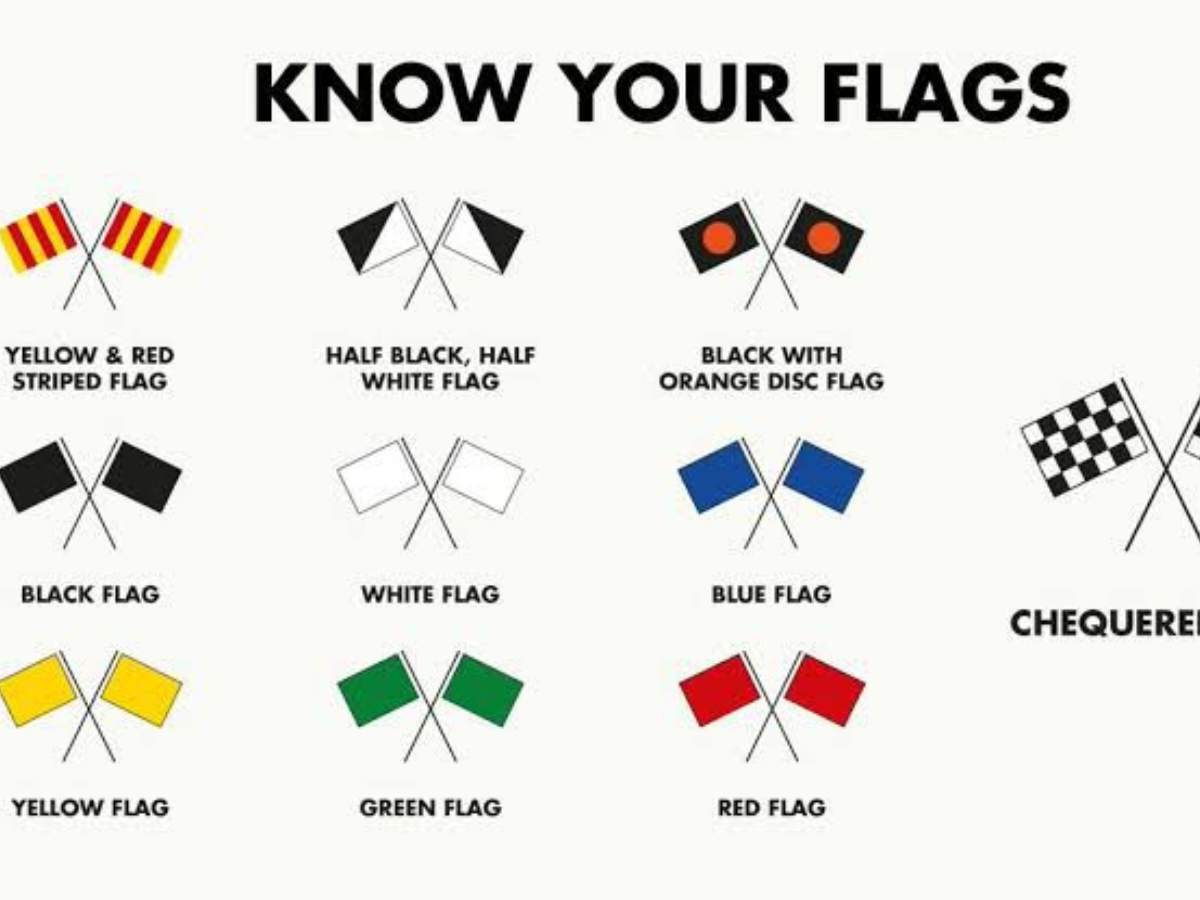
Formula One flags, Image courtesy RBR
🔍 Explore this post with:
While watching a Formula 1 race, one of the most common things noticeable is the flag. The marshals wave the flags during the race and each flag has a certain representation. Some are used often, and others not so much. Waving a flag is the most direct way to communicate with a driver racing at full speed. The flags are an indication for the drivers, it makes them aware of the conditions on the track.
The most common flags are the Red, Yellow, Green, and Chequered flag. Some of the flags have hardly been used in Formula 1. But they serve a significant purpose to the drivers during the race.
When the drivers are in the middle of the battle, the flags help them understand what is going on. This is a form of communication with the drivers as they draw out the meaning of the flag the minute they spot it. Consider this a model or a guide to help understand the flags used in Formula 1.
Related: Why does Lewis Hamilton not take part in F1’s Secret Santa?
All F1 flags explained
Yellow Flag

The yellow flag indicates a potential threat. It could be due to a barrier crash by a driver, an electrical failure or collision, or because of debris on the track. When the yellow flags are out the drivers must not overtake and should maintain minimum speed. The drivers will have to abandon their flying laps if it is shown during qualifying. During the race, if the yellow flag is drawn, it means there is danger and drivers must watch out. Double yellow flags mean they are prohibited from overtaking.
Green Flag
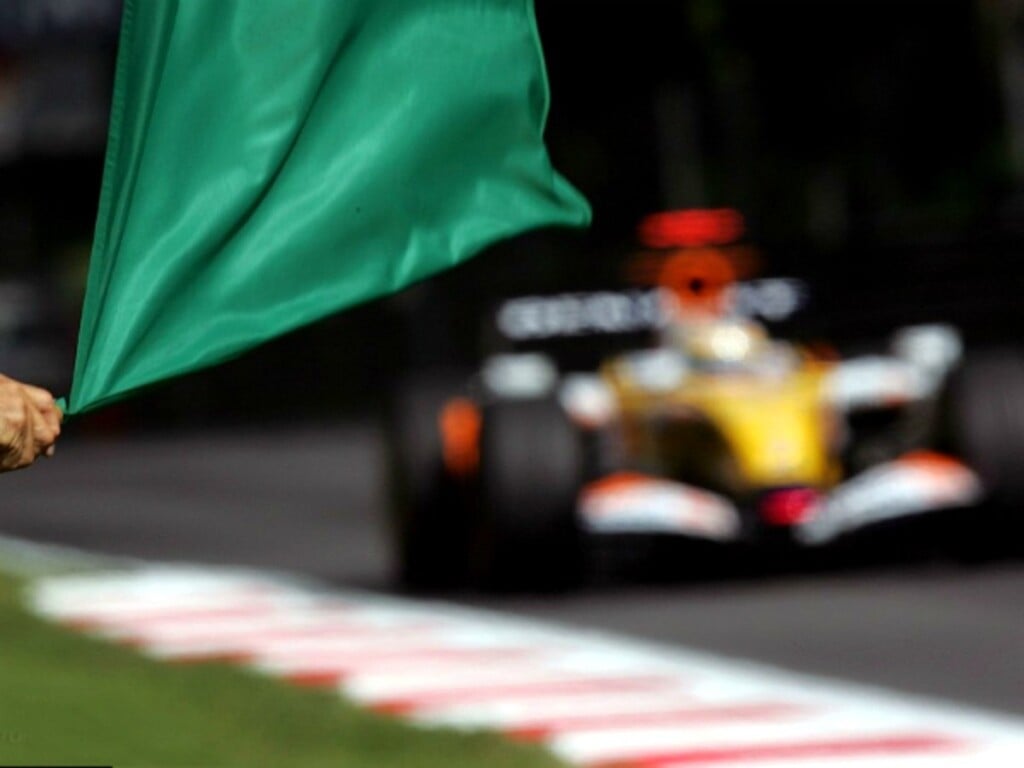
The green flag is to indicate that the race has started. A green flag shown after a yellow flag implies that the race can continue at the normal pace for the drivers. The drivers are allowed to overtake and there is no threat on the track when the green flag is waved. It basically means they can race.
Red Flag
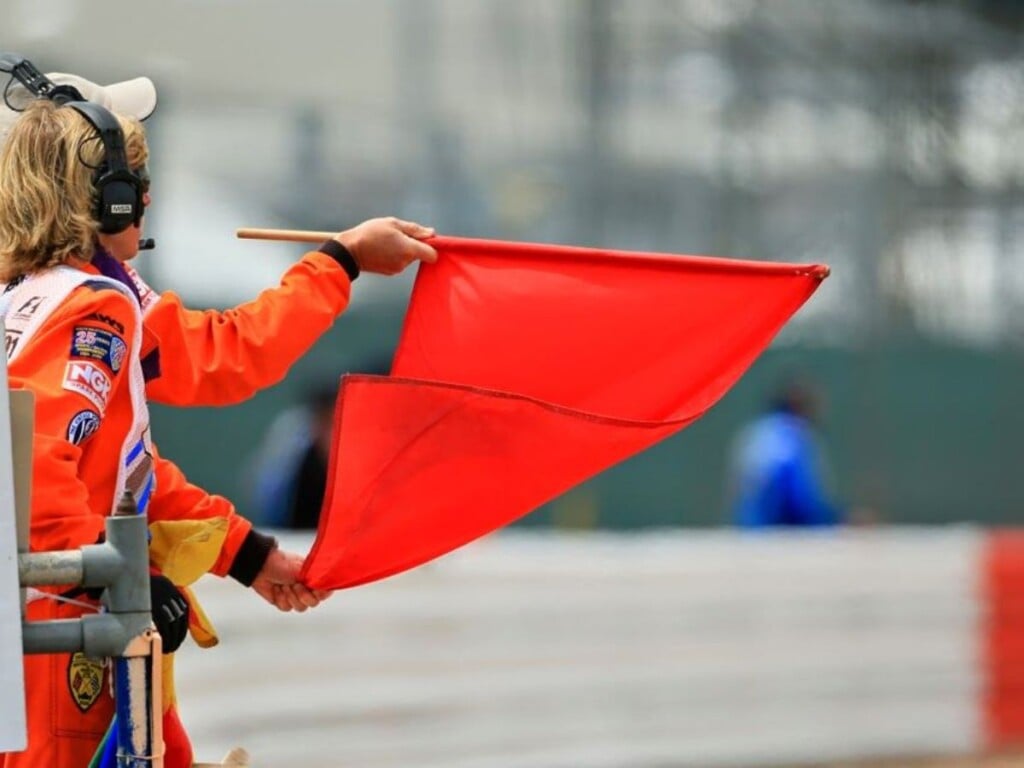
During the course of the weekend, whether it is the race, qualifying, or practice sessions if the red flag is waved the drivers are to stop immediately. It means that there is a grave danger for the drivers or spectators. The drivers must return to the pit lane. It is mostly waved when there is a big crash. In 2022, Zhou Guanyu suffered from a major crash and the red flag was immediately drawn out. The red flag can also be due to the weather conditions.
Blue Flag

The blue flag is more of a warning. The slower car must allow the faster car to pass through. A penalty will be given to the driver if the flag is shown thrice. It is used to warn the other drivers that there is a fast-moving car on the track. The slower cars must allow the faster cars to lap them when the flag is shown.
Black Flag
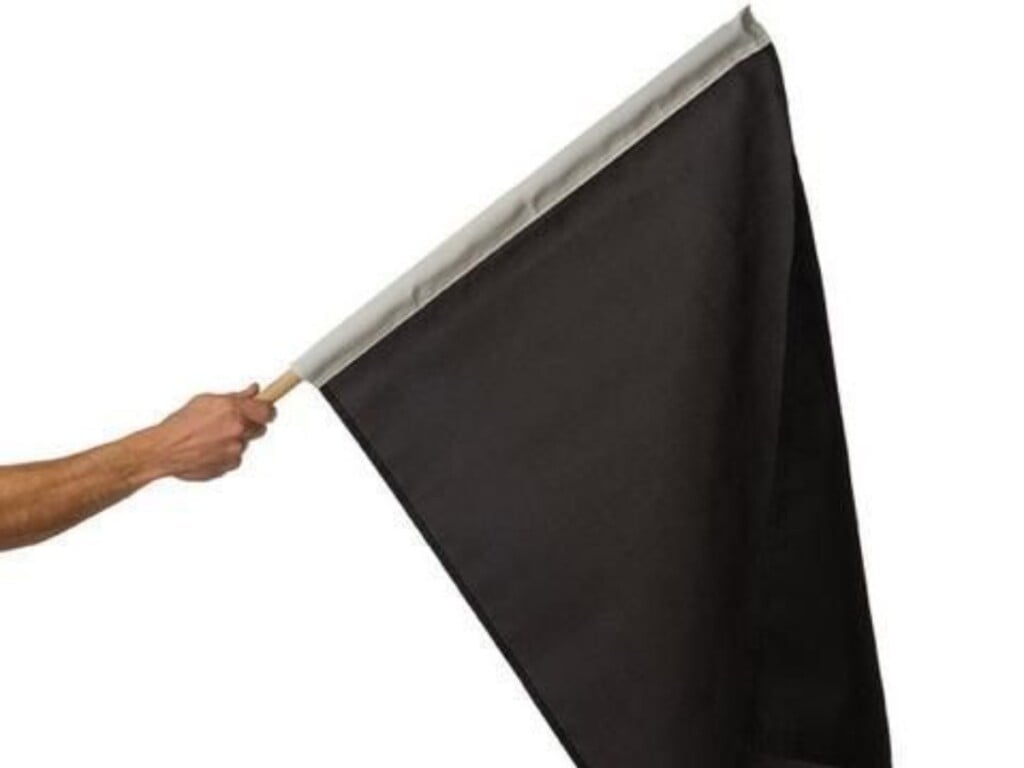
This is to indicate that a driver has been disqualified from the race. He must get back to the pit lane and is not allowed to participate in the race anymore. The last time a black flag was shown was in 2007, at the Canadian Grand Prix for Massa and Fisichella. When the red light was on, the two drivers exited the pit lane hence the flag was waved.
White Flag
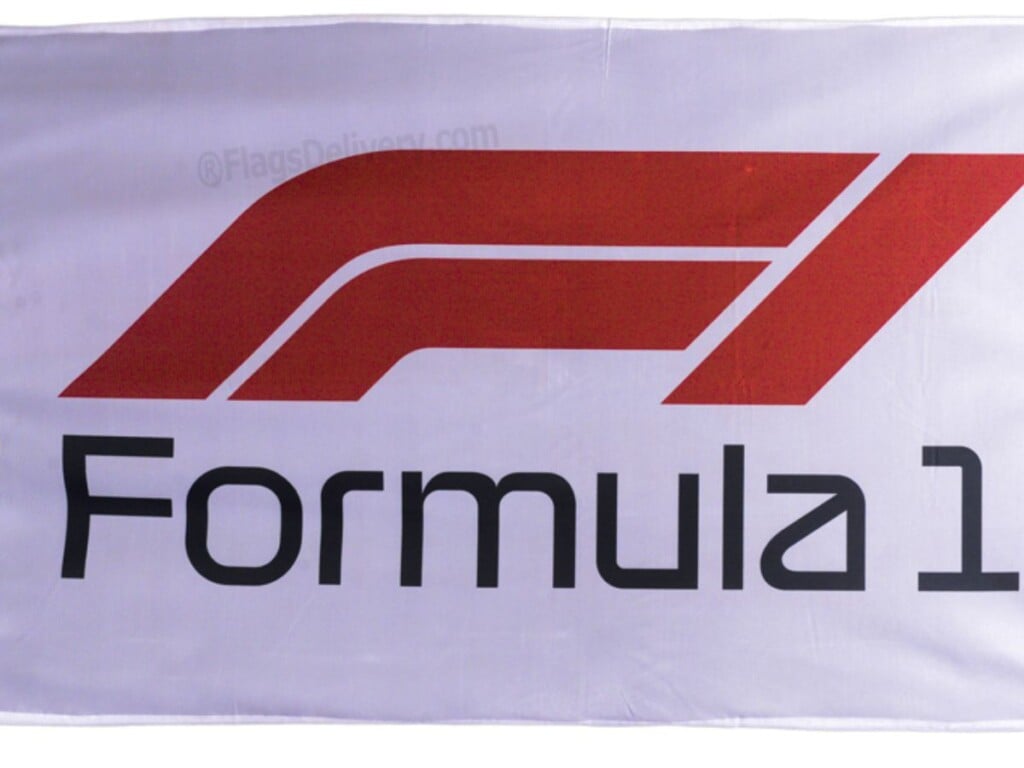
This is used to indicate that there is a slow-moving vehicle whether it is a race car or a safety car or even a medical car. It is normally used at the end of practice sessions, in the last corner when the drivers are practicing their race start.
Checkered Flag

The checkered flag is waved at every race to indicate that the session has come to an end. The race leader goes past the checkered flag and claims his win. It is also waved at the end of qualifying and practice sessions to make it known that the session is over.
Black with Orange circle Flag
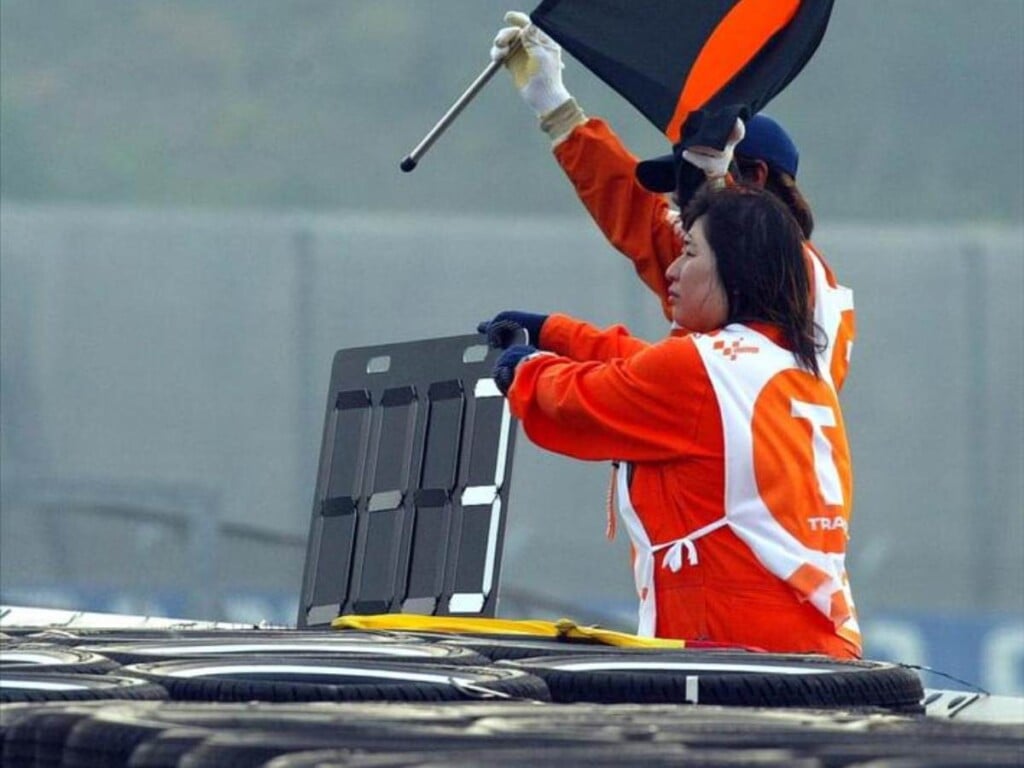
The black with orange circle flag is waved along with the driver’s car number. The flag indicates the mechanical issue in the car. It requires the driver to enter the pitlane immediately and stop the race. This happens due to a mechanical failure or some sort of issue with the car.
Half Black and Half White Flag, Yellow and Red striped Flag
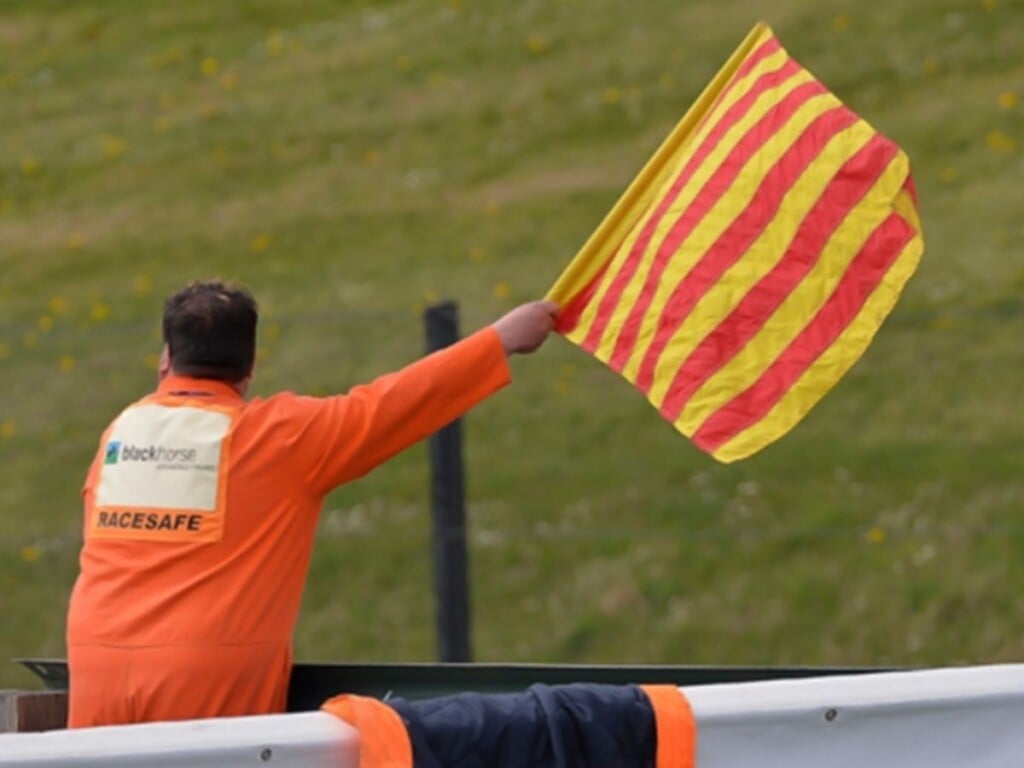
The half-black and half-white flag is waved to warn the drivers of their reckless behavior and unsportsmanlike attics that could bring the driver a penalty. It is to show the drivers they have done something wrong but not bad enough to be punished. In fact, it is similar to a yellow card in football. The yellow and red striped flag indicates the debris due to oil leaks, water, or any other lubricants.
In case you missed it:







